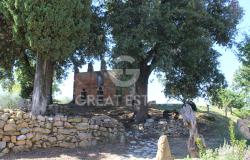You likely don't need an
Submitted by stevegwmonkseaton on Sun, 02/12/2017 - 04:59In reply to A newbie all over again! by Annec
You likely don't need an English book on growing veg here in Italy, well not for when to sow etc... Have a look in your local ferramenta or where you can buy plants. Many have a little leaflet provided by the sales people that gives a calendar of when to sow, plant on and plant out. However we have found most things are simply a month or so earlier than the UK. What we have found that's very different is the way you grow, that is how to plant, water and support. We were lucky to have a lovely old neighbour who helped us initially and over time understood why he did things his way. Others do things very different to him, but we learned that's either down to what they were told or that their specific plot has different conditions. Basically we've had little success growing from seed; either because they don't grow, are eaten or do not produce a good crop. Being dirt cheap, we found buying young plants by far easier. However this is not the case with everything as squash we planted seeds from a well know UK supermarket squash and they were 4 years old! Every one we planted, 4 per hole straight into the soil in May, came up!! By the way we are still eating last year's crop and will be until they run out March/April, they store brilliantly. Planting ( in double dug plot) is very important, we were very doubtful when our neighbour told us to dig a 30-40 cm hole, mix compost in and plant our tom plants below soil level, copious water, firm in, scraping of soil over the watered area (to stop evaporation) and then no more water for 3-4 days. Then water normally and keep putting a little more soil over to stop any loss. Within a month or so the plants are well above soil level and the hole almost full. We may on occasion heap more soil around the base. This we do with most of our veg plants and now realise it does a couple of things; gives the plants great root growth, added wind protection and good watering. The latter is essential and needs to be looked at according to how hot and dry (wind) it is as they grow. They reckon you should water a lot, but only every 2-3 days, however we have found daily (23:00 - 05:00) is best. We employ a watering system as there is no way I'm staying/getting up at those times. Happy to help more if needed, but if you like a book to do it, then any good UK book will do, just adjust the time by a month or so and allow for the heat and wind here.regards support and watering. Enjoy!
Thanks Steve that is very
Submitted by JessGriffiths on Sun, 02/12/2017 - 07:26In reply to You likely don't need an by stevegwmonkseaton
You are most welcome. If you
Submitted by stevegwmonkseaton on Sun, 02/12/2017 - 09:06In reply to A newbie all over again! by Annec
Hi I completely endorse
Submitted by julia G. on Sun, 02/12/2017 - 12:55In reply to A newbie all over again! by Annec
Hi I completely endorse Steves comments, I have a background in horticulture in the UK and found very quickly the best way forward was to watch the neighbours, they have generations of knowledge of how to deal with the various conditions which as Steve says are very different to each location. Within my own garden I have quite different soil textures. We have practised a rotation splitting the orto into 4, squares. My best advice is to decide exactly what you will use in the kitchen and learn to grow them first. Do not be too ambitious. We use both seed and young plants although I have found at times the drought and heat cause germination problems.It is difficult to advise without knowing your location do you get frost if so wait until the frosts subside then as the soil warms start planting. For spring we purchase small plants of tomatoes, peppers, salad crops,parsley and celery.We sow seed of beetroot, radish, French beans,basil,courgettes and nasturtiums..Basil I sow in the ground and in trays. You just can't get enough.French beans are the best to plant we have tried others but it is to dry for the. Make the planting holes and sow at least 3to 4 per hole. It gives a dense row of beans.Beware with the courgettes my first year here I sowed a full row and like Steve with the squash we were eating them throughout the summer. I even made courgette cake. You will only need one or two. Plants.We also plant seed potatoes and onion sets.Later in the season we plant leeks, cabbage , cauliflowers etc. Our garden is organic so we use all types of companion planting and natural remedies for feeding and pest control.Always dig your green household waste into trenches and plant your tomatoes above it.There are a multitude of gardening books to choose from but I feel the best book you can buy is the RHS Encyclopaedia of gardening it has most of the answers. Hope this is helpful like Steve if you have any further questions always happy to reply.







